Technical Service Engineer
40+ Technical Service Engineer Interview Questions and Answers

Asked in Dalmia Bharat Cement

Q. What tests are performed on fresh concrete and hardened concrete?
Tests on fresh concrete include slump test, air content test, and temperature test. Tests on hardened concrete include compressive strength test, flexural strength test, and durability test.
Tests on fresh concrete: slump test, air content test, temperature test
Tests on hardened concrete: compressive strength test, flexural strength test, durability test
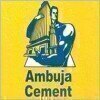
Asked in Ambuja Cements

Q. What is the market potential and share of your product?
The potential of our market is significant and our product has a competitive share.
Our market is growing rapidly and has a high demand for our product.
We have a strong presence in the market and are continuously expanding our reach.
Our product has a competitive edge over similar products in the market.
We have a loyal customer base and are constantly acquiring new customers.
Our market share is expected to increase in the coming years.
We have a well-planned marketing strategy t...read more
Technical Service Engineer Interview Questions and Answers for Freshers

Asked in Dalmia Bharat Cement

Q. What are the types of cement available in the market?
Types of cement include Portland cement, white cement, rapid hardening cement, low heat cement, sulfate resisting cement, etc.
Portland cement is the most common type used in construction
White cement is used for architectural purposes
Rapid hardening cement sets quickly
Low heat cement generates less heat during hydration
Sulfate resisting cement is used in areas with high sulfate content in soil or water

Asked in Nagarjuna Construction Company

Q. What is the water-cement ratio?
The water cement ratio is the ratio of the weight of water to the weight of cement used in a concrete mix.
It is an important factor in determining the strength and durability of concrete.
A lower water cement ratio results in stronger and more durable concrete.
The water cement ratio can vary depending on the type of concrete mix and its intended use.
For example, a typical water cement ratio for general-purpose concrete is around 0.5 to 0.6.
On the other hand, a water cement rat...read more

Asked in Dalmia Bharat Cement

Q. What are the IS Codes for different types of cement?
IS Codes for different types of cement
IS 269: Ordinary Portland Cement
IS 455: Portland Slag Cement
IS 1489: Portland Pozzolana Cement
IS 8041: Rapid Hardening Portland Cement
IS 12330: Sulphate Resisting Portland Cement

Asked in Dalmia Bharat Cement

Q. What are the main reasons for crack development in slabs?
The main reasons for cracks development in slabs include shrinkage, settlement, overloading, and poor construction practices.
Shrinkage of concrete during curing process
Settlement of underlying soil
Overloading beyond the design capacity
Poor construction practices such as inadequate reinforcement or improper curing
Temperature changes causing expansion and contraction
Technical Service Engineer Jobs




Asked in Ambuja Cements

Q. What technical services do you provide to customers?
Technical services to customers refer to the support and assistance provided by a company to its clients regarding their technical issues.
Installation and setup assistance
Troubleshooting and problem-solving
Maintenance and repair services
Software updates and upgrades
Training and education on product usage
24/7 technical support
Remote assistance and monitoring
Customization and integration services

Asked in Dalmia Bharat Cement

Q. How do you calculate the target strength of concrete?
The target strength of concrete is calculated using the characteristic compressive strength of concrete and the standard deviation.
Calculate the characteristic compressive strength of concrete based on the mix design.
Determine the standard deviation of the concrete mix.
Use the formula: Target strength = Characteristic strength + (1.65 * Standard deviation)
For example, if the characteristic strength is 30 MPa and the standard deviation is 4 MPa, the target strength would be 30...read more
Share interview questions and help millions of jobseekers 🌟


Asked in Bounteous x Accolite

Q. How do you troubleshoot an internet issue?
To troubleshoot an internet issue, check the connection, restart the router, check for software issues, and contact the service provider if needed.
Check the physical connection of the router and modem
Restart the router and modem
Check for any software issues on the device (e.g. network settings, firewall)
Contact the internet service provider for further assistance

Asked in Ambuja Cements

Q. What percentage of the overall target is the premium product?
I don't have the available data to answer this question.
Sorry, I don't have access to the target data to provide an accurate answer.
Without the necessary information, I cannot provide a percentage for premium products in the target.
Unfortunately, I am unable to answer this question without the relevant data.

Asked in Ambuja Cements

Q. What is the market share of premium products in your area?
I do not have the available data.
N/A

Asked in Dalmia Bharat Cement

Q. How do you test cement on site?
Cement can be tested on site using various methods such as slump test, compressive strength test, and temperature monitoring.
Perform a slump test to measure the consistency and workability of the cement mixture.
Conduct a compressive strength test by casting cubes or cylinders of cement and testing their strength after a specified curing period.
Monitor the temperature of the cement during mixing and curing to ensure proper hydration and strength development.
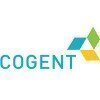
Asked in Cogent E Services

Q. How do you handle an irate customer?
I remain calm, listen actively, empathize with their situation, apologize for any inconvenience, and work towards finding a solution.
Remain calm and composed
Listen actively to understand their concerns
Empathize with their situation
Apologize for any inconvenience caused
Work towards finding a solution to address their issue

Asked in Microland

Q. How do you find an IP address?
An IP address can be found by checking network settings, using command prompt, or using online tools.
Check network settings on your device
Use command prompt and type 'ipconfig' for Windows or 'ifconfig' for Mac/Linux
Use online tools like 'WhatIsMyIP.com' or 'IP-Address.com'
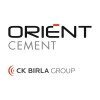
Asked in Orient Cement

Q. What does the term 'mean strength of concrete' refer to?
Mean strength of concrete refers to the average compressive strength of concrete samples tested under standardized conditions.
It is calculated by averaging the compressive strength of multiple concrete samples.
For example, if three samples have strengths of 25 MPa, 30 MPa, and 35 MPa, the mean strength is (25 + 30 + 35) / 3 = 30 MPa.
Mean strength is crucial for ensuring that concrete meets design specifications and safety standards.
It helps in assessing the quality and durabi...read more

Asked in Orient Cement

Q. What is the chemical composition of PPC (Portland Pozzolana Cement)?
PPC is a type of cement made from Portland cement and pozzolanic materials, enhancing durability and strength.
PPC consists of Portland cement (60-75%) and pozzolanic materials (25-40%).
Common pozzolanic materials include fly ash, volcanic ash, and silica fume.
The chemical composition typically includes SiO2, Al2O3, Fe2O3, CaO, and MgO.
PPC has improved resistance to sulfate attack and reduced permeability compared to ordinary Portland cement.

Asked in Fujitsu Network Communications

Q. How does a certificate authority issue a certificate?
A certificate authority issues a certificate by verifying the identity of the requester and digitally signing the certificate.
Verify the identity of the requester through various methods such as domain validation, organization validation, or extended validation.
Generate a public and private key pair for the requester.
Create a certificate signing request (CSR) containing the requester's public key and identity information.
Verify the information in the CSR and validate the requ...read more

Asked in Ambuja Cements

Q. What is the concrete?
Concrete is a composite material made of cement, water, and aggregates.
It is used in construction for building foundations, walls, and floors.
The strength and durability of concrete can be improved by adding reinforcing materials like steel.
Different types of concrete are used for different purposes, such as high-strength concrete for bridges and precast concrete for building components.
Concrete can also be decorative, with options like stamped or stained concrete for outdoor...read more

Asked in Dalmia Bharat Cement

Q. Manufacturing process of cement
The manufacturing process of cement involves several stages including quarrying, crushing, grinding, blending, and burning.
Quarrying: Limestone and clay are extracted from quarries.
Crushing: The extracted materials are crushed into smaller pieces.
Grinding: The crushed materials are further ground into a fine powder.
Blending: The powdered materials are mixed in the right proportions to create the desired cement composition.
Burning: The blended materials are heated in a kiln to...read more

Asked in Ambuja Cements

Q. What is the role of a Technical Service Engineer?
Technical service engineers are needed to provide technical support, troubleshoot issues, and ensure customer satisfaction.
Provide technical support to customers
Troubleshoot and resolve technical issues
Ensure customer satisfaction with products or services
Conduct product demonstrations and training for customers
Collaborate with sales and engineering teams to improve products or services
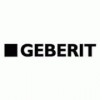
Asked in Geberit Plumbing Technology

Q. Grades of Pipping Material used in Indian market?
Various grades of piping materials used in the Indian market include carbon steel, stainless steel, alloy steel, and PVC.
Carbon steel is commonly used for general piping applications due to its affordability and durability.
Stainless steel is preferred for applications requiring corrosion resistance, such as in the food and pharmaceutical industries.
Alloy steel is used for high-temperature and high-pressure applications, such as in the oil and gas industry.
PVC (polyvinyl chlor...read more
Asked in Ginlong Technologies

Q. *solar inverter capacity , calculation of solar panels
Solar inverter capacity is determined by the total wattage of solar panels connected to it. Calculate the number of solar panels needed based on inverter capacity and panel wattage.
Solar inverter capacity is typically measured in kilowatts (kW).
To calculate the number of solar panels needed, divide the total inverter capacity by the wattage of each panel.
For example, if the inverter capacity is 5kW and each panel is 300W, you would need 17 panels (5kW / 300W = 16.67 panels). ...read more

Asked in Mogora Cosmic

Q. What is joints for welding metals
Joints for welding metals are the areas where two metal pieces are joined together to create a strong bond.
Joints are prepared by cleaning and aligning the metal pieces to be welded.
Common types of joints include butt joint, lap joint, corner joint, and T-joint.
The type of joint used depends on the thickness and shape of the metal pieces.
Proper preparation of joints is crucial for a successful weld.
Examples: Butt joint - used for joining two pieces of metal in a straight line...read more

Asked in Fujitsu

Q. How do you write Infrastructure as Code (IAC) for EC2?
Infrastructure as Code (IaC) for EC2 allows automated provisioning and management of AWS EC2 instances.
Use AWS CloudFormation to define EC2 resources in YAML or JSON.
Example: Define an EC2 instance in CloudFormation template.
Utilize Terraform for IaC, with HCL syntax to manage EC2 instances.
Example: 'resource "aws_instance" "example" { ami = "ami-123456" instance_type = "t2.micro" }'
Leverage AWS CDK (Cloud Development Kit) for programming languages like Python or TypeScript.

Asked in RSM India

Q. What is Primary key, Unique key
Primary keys uniquely identify records in a table, while unique keys ensure all values in a column are distinct.
Primary Key: A column or set of columns that uniquely identifies each row in a table.
Example: In a 'Users' table, 'UserID' can be a primary key.
Unique Key: A constraint that ensures all values in a column are unique, but allows one NULL value.
Example: In a 'Users' table, 'Email' can be a unique key, allowing one user to have a NULL email.

Asked in GHCL Limited

Q. Various designs aspects
Various design aspects include functionality, aesthetics, user experience, and manufacturability.
Functionality: Ensure the product performs its intended purpose effectively.
Aesthetics: Consider the visual appeal and design elements of the product.
User experience: Focus on how users interact with the product and make it intuitive.
Manufacturability: Design the product in a way that is easy and cost-effective to manufacture.
Examples: Apple products are known for their sleek desi...read more

Asked in Ambuja Cements

Q. Bending moment diagram
A bending moment diagram shows the variation of bending moment along the length of a beam.
Bending moment is the product of force and distance from a point
Positive bending moment causes beam to bend concave upwards
Negative bending moment causes beam to bend concave downwards
Bending moment diagram helps in determining the maximum bending moment and shear force
Bending moment diagram is useful in designing and analyzing beams
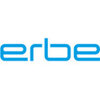
Asked in ERBE MEDICAL INDIA PRIVATE LIMITED

Q. Blood flow sequences through Heart of Human body.
Blood flows through the heart in a specific sequence to ensure proper circulation throughout the body.
Deoxygenated blood enters the right atrium from the body via the superior and inferior vena cava
Blood then flows into the right ventricle and is pumped to the lungs for oxygenation
Oxygenated blood returns to the heart from the lungs via the pulmonary veins into the left atrium
Blood then enters the left ventricle and is pumped out to the rest of the body through the aorta

Asked in Fujitsu

Q. Have you handled P1/P2 issues?
Yes, I have experience handling P1/P2 incidents in my previous roles.
Yes, I have handled multiple P1 incidents where immediate action was required to resolve critical issues impacting production systems.
I have also managed P2 incidents by prioritizing and troubleshooting to minimize impact on operations.
Examples include resolving server outages, database failures, and network connectivity issues under time pressure.

Asked in Fujitsu

Q. Speak for five minutes on any topic.
The importance of cybersecurity in today's digital age
Cybersecurity is essential to protect sensitive data and prevent cyber attacks
Companies invest in cybersecurity measures to safeguard their networks and systems
Cybersecurity professionals use tools like firewalls, antivirus software, and encryption to secure data
Regular security audits and updates are crucial to stay ahead of evolving threats
Training employees on cybersecurity best practices is key to preventing human erro...read more
Interview Questions of Similar Designations
Interview Experiences of Popular Companies








Reviews
Interviews
Salaries
Users

















